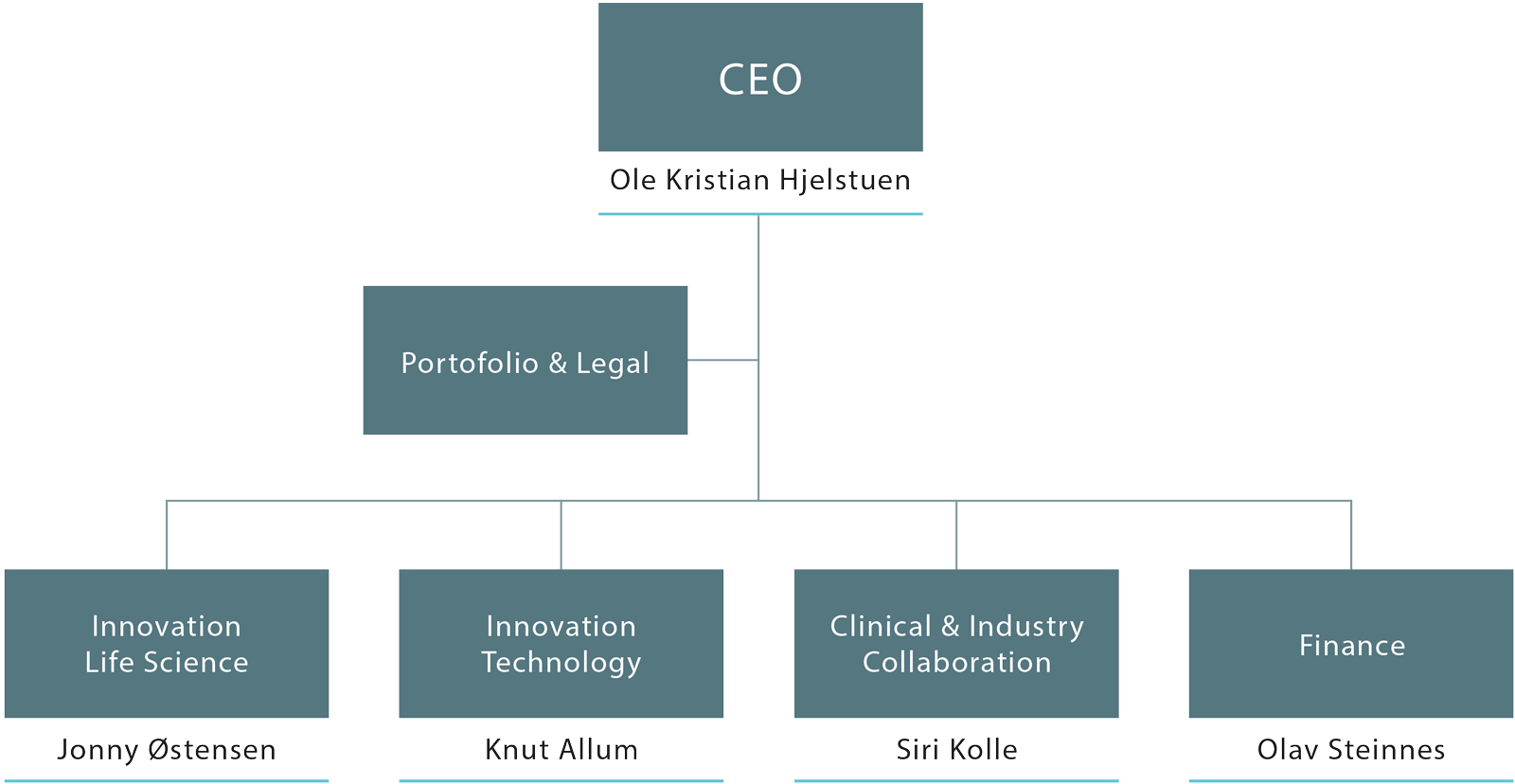Reorganisation and major focus on digitalisation and e-health
Inven2 reorganised parts of its activities in 2017, and has now established digitalisation and e-health as a dedicated focus area. The purpose is to contribute to the development of more research-based products and services, especially in digital technology.
There is increased demand for the services that form the basis for Inven2’s internal reorganisation.
‘Skilled researchers and clinicians are constantly reporting new findings and ideas that can be developed into new services and products. That is very positive and something we have worked systematically to achieve for a long time,’ says Ole Kristian Hjelstuen, CEO of Inven2.
The purpose of the reorganisation is to become more efficient and service-minded in relation to researchers and clinicians at the University of Oslo and the hospitals in the South-Eastern Norway Regional Health Authority.
‘Our staff will work more closely together and communicate better with the researchers and clinicians than before. This will help us to achieve greater synergies and to develop better research-based products and services more quickly,’ says Hjelstuen.

Portfolio & Legal
Helle Thorsen
Anne Marie Bjørgo
Mohammed Amarzguioui
Finance
Nina Løvbakken
Ole Kristian Skaar
Astrid Grønn
Ashpreet Kaur Bhalla
Lusha Fu
Innovation Technology
Bjarne Tvete
Elin Melby
Ivar Bergland
Per Michaelsen
Jannicke Kristoffersen
Innovation Life Science
Kristin Sandereid
Jørund Sollid
Jan Solberg
Aina Haugen Rengmark
Magne Rekvig
Gerbrand Koster
Mika Falck-Hansen
Kirsten Stangebye
Eivind Roverud
NN (Project Manager)
NN (Business Development Specialist)
Clinical & Industry Collaboration
Erlend Carlson
Siv Merethe Uddeholt
Tine Slettedal Jansson
Sven Arne Sogn
Lise Rødsten
Ingrid O. Dominguez
Atanaska Bedeleva
Two new interdisciplinary teams
It is Inven2’s innovation department that has been reorganised. The department previously consisted of a technology team and a business team that were responsible for different project phases. The teams have been replaced by two interdisciplinary teams in life sciences and technology, respectively: ‘Innovation Life Sciences’ and ‘Innovation Technology’.
‘The biggest difference is that the new teams will cover the whole value chain from research to business development in specialised areas. We believe this way of working will be positively perceived by the scientists and clinicians. At the same time, it will enable us to work more efficiently and further raise the quality of our projects,’ says Hjelstuen.
The Innovation Life Sciences team will be responsible for:
- Diagnostics and research tools
- Pharmaceuticals
The Innovation Technology team will be responsible for projects that include:
- ICT, including apps
- Materials and energy
- Medical technology
- e-health
- Databases and registers, known as Big Data
- Algorithms for medical equipment
The two teams will work closely together on projects that encompass overlapping fields.
Major focus on digitalisation, e-health and big data
The technology team is led by Knut Allum. It is this team that will be responsible for the new focus on digitalisation, e-health and big data.
‘Inven2 represents the best knowledge communities we have in ICT research in Norway today. Digitalisation is currently an important focus area at the University of Oslo and Oslo University Hospital, among other things through the Centre for Digital Life Norway. By increasing our internal expertise and focus on this field, we can help to accelerate the digital revolution that is approaching at full speed,’ says Allum.
In particular, he envisages Inven2 making a positive contribution to necessary digitalisation in health institutions so that they are equipped to meet current and future needs for rationalisation and better patient experiences.
‘The focus on digitalisation aims to underpin the national e-health strategy, focusing on innovation that supports the digitalisation of work processes, more cohesive patient pathways, better use of health data, new ways of providing medical assistance and a common foundation for digital services.’



 Norsk
Norsk